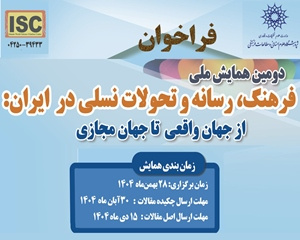حذف مرزهای مکانی در تئاتر عروسکی با توجه به نظریات ریچارد شکنر و نقش آن در گسترش روابط میان عوامل اجرایی (مقاله علمی وزارت علوم)
درجه علمی: نشریه علمی (وزارت علوم)
آرشیو
چکیده
هر مکان دارای بار معنایی مختص به خود است. در اجراهای تئاتر، انتخاب مکان و شناخت روابط میان عوامل اجرایی در مکان اجرا، می تواند به انتقال معنای موجود در ذهن کارگردان کمک کند. کارگردانان معاصر دست به تقسیم بندی جدید فضا در اجراهایشان زده اند و فضا را به شکل های متفاوتی به کار گرفته اند و رابطه ی میان بازیگران و تماشاگران را تغییر داده و گونه های جدیدی را به تئاتر معرفی کرده اند. از میان آنها می توان به ریچارد شکنر اشاره کرد. توجه او به مشارکت تماشاگر و تاثیر آن بر اجرا، سبب شده است که گونه ی جدیدی را با عنوان تئاتر محیطی معرفی کند. در تئاتر محیطی، مرز تفکیک کننده ی جایگاه تماشاگر و بازیگر حذف می شود و فعالیت تماشاگران بر اجرا تاثیر می گذارد و روابط جدیدی بین تماشاگر و بازیگر شکل می گیرد. حال با توجه به این که در تئاتر عروسکی به واسطه ی حضور عروسک با روابط بیشتری میان عروسک و عروسک گردان و تماشاگران روبرو هستیم، هدف از این پژوهش این است که، با توجه به ساختار اجراهای شکنر بتوان با روش تحلیلی- تطبیقی، مکان را در تئاتر عروسکی بررسی کرد. نتایج نشان می دهد که حذف مرزهای مکانی در تئاتر عروسکی، می تواند روابط جدیدی را میان عوامل اجرایی در تئاتر عروسکی سبب شود.The elimination of place borders in puppet Theatre considering with Schechner views and it's role in improving relationships between performative elements.
While every artwork needs a space for being displayed, that space perforce entails a boundary between the artwork and the audience. This boundary puts the audience in the position of the distanced viewer. And if the audience trespasses this boundary, the meaning of the artwork will definitely change. Every period in the history of theater has witnessed a different usage of space, either conventional or unconventional, for the organization of performances. In theater studies, it's important for the performance researcher to pay attention to the space of performance and the relations developed amongst performative elements, as every sort of interaction with space can transfer a different meaning. Diverse divisions of space in performance would increase performative types and hence develop new relationships, which can help to better convey the meaning intended by the director. Accordingly, contemporary directors have paid more attention to the division of space in their performances, have used space in different ways, and therefore altered the type of relationship between actors and audiences, while introducing performative types based on new forms and contents. Schechner is one of these directors as well as one of the most important performance theorists. Considering rituals and social activities, he attempts to approach theater in its primal form, which is the ritual. Meanwhile, his concern with the spectator’s participation or active presence has led to the formation of a new theatrical type which he calls the “Environmental Theater” encompassing six distinct axioms. In the environmental theater, we encounter a new division of space, which removes any dissociative boundaries between the actor and the spectator’s positions. The removal of boundaries enables the spectator to take part in the performance and affect the performative process with his activities as a progressive element in space. The avoidance of classical space divisions in performance would generate new relationships between the actor and the audience, which not only alters the form of performance, but also causes semantic extension. Contemporary theories of performance, especially that of Schechner proves to be beneficial in the study of Puppet Theater as well. The main objective of the present research is to incorporate Schechner’s theories of form, his usage of space and elimination of positional boundaries into a comparative-analytical reading methodology in order to respond to the basic question of how the removal of spatial boundaries and spatial division in Puppet Theater could create new relationships between the main theatrical elements – that is, between actor and actor; actor and audience. In Puppet Theater, these relations could be traced between the puppet, the puppeteer and the spectators, making the question of spatial elimination and the resultant relations between the puppet, the puppeteer and the audience even more critical. The study reveals that apparently the development of new relationships between performative elements in Puppet Theater is directly affected by an increase in the number of its performative forms. Therefore, a better recognition of new relationships in Puppet Theater can be an influential factor in the creation of more diverse and innovative works while involving a new way of audience interaction and situation.







